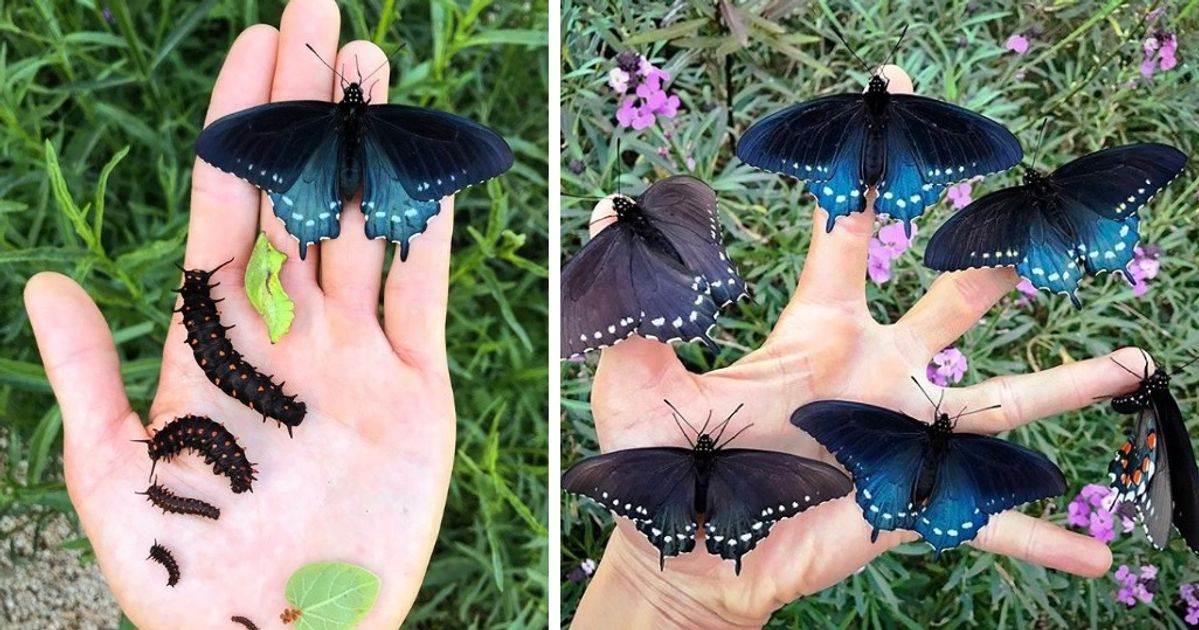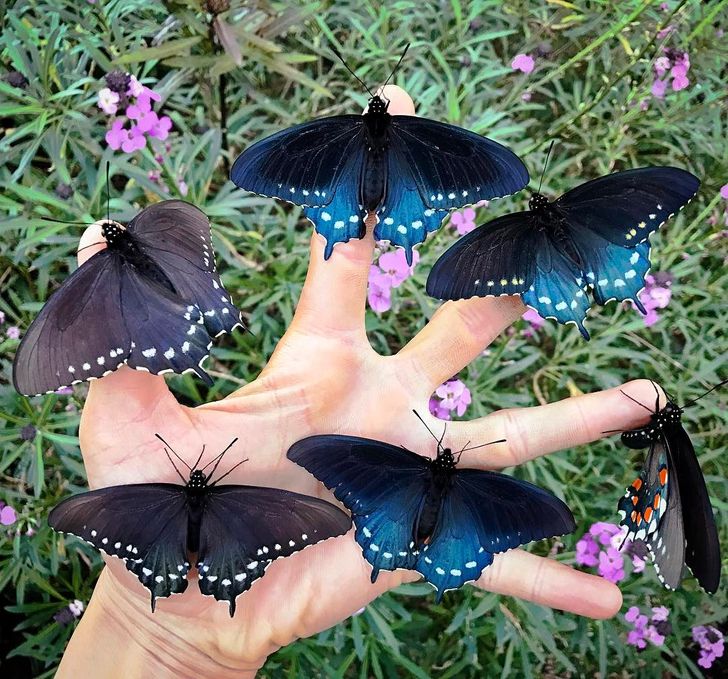i love butterflies❤🦋
there were lot of butterflies in my area now there is none😕
A Man From San Francisco Repopulates Rare Butterfly Species in His Own Backyard

Urban sprawl has put many animal and plant species on the verge of extinction, and butterflies are no exception. The California pipevine swallowtail is a beautiful blue butterfly which has been living in San Francisco for centuries. But as city development has increased since the early 20th century, this wonderful butterfly became a rare sight in the city. Saving the butterfly and reintroducing it to San Francisco became the mission for Tim Wong, an aquatic biologist, and he does it right in his backyard.
Here at Bright Side we’ve learned more about the DIY efforts of this young scientist that helps rare butterflies come back to the city.
The California pipevine swallowtail almost went extinct due to urbanization.
The California pipevine swallowtail is a real wonder in the kingdom of butterflies. The life cycle of this butterfly starts with little red eggs that they lay in clutches on plant stems and leaves. Then the eggs crack and black caterpillars with orange spots appear, eventually turning into gorgeous butterflies with a deep blue color. These butterflies were found in abundance in San Francisco a long time ago, but as more and more areas of the city developed, these creatures lost their habitat and almost disappeared.
Tim Wong and his passion for nature made him a “butterfly whisperer.”
Tim Wong is an aquatic biologist at the California Academy of Sciences who has always had a deep love for nature. His Instagram account is full of eye-catching images showing Tim with the animals he takes care of at the academy’s museum: penguins, owls, snakes, lizards, and, of course, butterflies.
Tim’s passion for butterflies began in elementary school where he first tried to raise these little creatures with his classmates. Tim was amazed at the incredible metamorphosis butterflies go through to turn from caterpillars to adults.
Years later, when Tim learned the sad story of the California pipevine swallowtail, he decided to do what it takes to return this beautiful butterfly to the city. He did thorough research and learned that when in the caterpillar stage, the butterfly would only eat the California pipevine plant that had also become rare in the region.
Tim found the plant at the San Francisco Botanical Garden, and asked the garden experts to give him a few clippings. Using the plant, Tim built a DIY greenhouse in his backyard, recreating the butterfly’s natural environment.
“[I built] a large screen enclosure to protect the butterflies and to allow them to mate under outdoor environmental conditions — natural sun, airflow, temperature fluctuations,” says Tim. The young biologist started his breeding experiment with an initial group of 20 caterpillars he picked up in local residences where this rare species could still be found. A while later he was already able to bring hundreds of butterflies to the local botanical garden.
One man’s DIY efforts had incredible results.
An experiment that started with only 20 caterpillars has resulted in thousands of home-bred California pipevine swallowtails that Tim has already introduced to the San Francisco Botanical Garden, and he is not going to stop. He has also managed to grow more than 200 California pipevine plants to make the butterflies he breeds feel at home.
Altogether it means that there is a good chance that one day these butterflies will rebound in the city again. “Each year since 2012, we’ve seen more butterflies surviving in the garden, flying around, laying eggs, successfully pupating, and emerging the following year,” says Tim. “That’s a good sign that our efforts are working!”
By his own example, Tim Wong proves that anyone can contribute to saving the environment, even from their own backyards. While breeding butterflies is a job that probably can’t be done by just anyone, there are simpler ways to help. The key to preserving wildlife is keeping natural habitats untouched. So, planting flowers and trees favored by local animals and insects can make a huge difference.
What do you think of Tim’s butterfly-saving project? Would you like to see how he breeds butterflies with your own eyes?
Comments
Tim, thank you for your great effort to protect this rare butterflies
Nice one... 😁
That's absolutely repulsive. I hope no one starts doing that where I live. I can't stand these things and don't want them anywhere near me, which is why I live where I live. If people want to live with them that's fine but don't force them on others.
Weird response but ok.
Related Reads
My Ex Put His New Family Over Our Son, So I Served Him the Sweetest Revenge

18 Stories That Prove a Cleaner’s Job Is About More Than Just Dusting

I Absolutely Refuse to Tolerate My DIL’s Laziness, My Son Deserves a Wife, Not a Freeloader

15 Fitting Room Stories That Can Make You See Shopping in a Whole New Light

My Husband Made Me Care for His Sick Mother, So I Served a Payback He Won’t Forget

10 Parents Whose Quiet Kindness Spoke Louder Than Words

I Refuse to Let My Father’s Secret Love Child Steal My Inheritance

I Refuse to Let the Former Owner Get Married in My Backyard—My Kindness Stops Here

I Was Excluded From a “Family” Dinner—My Revenge Taught My DIL a Lesson

11 True Stories That Prove Real Life Doesn’t Need a Screenplay

13 Times People Accidentally Uncovered Someone’s Biggest Secret

13 Times Babysitting Jobs Took an Unexpected and Emotional Twist

